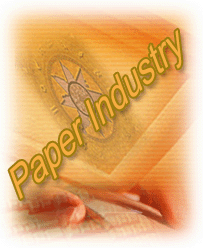 |
| EU Anti-dumping, anti-subsidy duties hinder win-win solution |
|
http://www.paper.com.cn
2011-05-24 |
|
The European Union announced on May 14 that it will impose 4 percent to 12 percent anti-dumping duties and 8 percent to 35 percent anti-subsidy duties on coated paper imported from China in the next five years, breaking with convention by applying anti-subsidy duties on a "non-market economy" for the first time.
Coincidentally, the European Commission also submitted a proposal on May 10 on the reform of the generalized system of preferences (GSP), a preferential policy for imports from developing countries. This is to reduce the number of countries and regions that enjoy import benefits from the European Union from 176 to about 80. The new regulations will officially take effect at the beginning of 2014 once it passes assessments.
However, the aforementioned measures are only a prelude of a series of actions and plans the European Union has formulated based on its new external trade strategy. The European Commission released a strategic paper titled "Trade, Growth and World Affairs" on Nov. 9, 2010, which outlined a new strategy for the European Union's external trade over the next five years and emphasized adopting stronger measures to create the so-called "fair competition" conditions for European companies.
The public opinion believed this new strategy will inevitably bring new trade disputes while promoting the European Union's external trade. The European Union has explored ways to deal with the competition from emerging economies in recent years. As a result, it set the so-called "mutual beneficial trade" principle and promoted the transformation "from a free market to a fair market." However, its essence is to force emerging economies to further open markets and take protectionist measures to resist external competition.
Some seem to detect "a smell of gunpowder" from the European Union's decision to impose "dual duties" on coated paper imported from China. As the European Union has not acknowledged China's full market economy status, it used discriminative and unfair methods of selecting a "substitute country" during its anti-dumping investigations against China while insisting on launching anti-subsidy investigations into Chinese goods.
Simultaneously imposing both anti-subsidy and anti-dumping trade remedies on the same goods is against the rules of the WTO. The reason behind the European Union's refusal to acknowledge China's market economy status lies in the fact that the European Union can select a "substitute country" at will for anti-dumping cases involving Chinese goods in order to determine "normal prices" of related goods and then evaluate whether the goods under investigation are dumped in the European Union market. It is terribly unfair that the European Union selected the United States as China's substitute country in the coated paper case, whose production costs are obviously much higher than that of China.
The United States once broke with the tradition of not taking anti-dumping measures against "non-market economies" in 2006, imposing "dual duties" on imports from China, in hopes of curbing its growing trade deficit with China. China filed a formal complaint to the WTO on Dec. 1, 2010, requesting the organization to investigate the "dual duties" imposed by the U.S. Department of Commerce on off-road tires, standard and rectangular steel pipes and laminated woven sacks imported from China.
The WTO ruled on March 11, 2011 that the anti-subsidy and anti-dumping measures taken by the United States on Chinese goods were against WTO rules. It is foreseeable that China will submit a complaint to the WTO for the European Union's decision to impose "dual duties" on coated paper from China.
At the same time, some far-sighted officials have called on the European Union to rethink its anti-subsidy measures because the European Union itself has provided prohibited subsidies to many projects. For example, the United States and European Union filed complaints against each other with the WTO over subsidies to aircraft makers Airbus and Boeing. The ruling on the long-running high-profile dispute is that Airbus and its parent company EADS received about 20 billion U.S. dollars in illegal government subsidies. It is possible that the European Union's trading partners may threaten a tit-for-tat response if anti-subsidy duties are levied on them.
It should be pointed out that the European Union's anti-dumping and anti-subsidy duties on Chinese goods are unfair, and its loss will outweigh the gain. China and the European Union are building an increasingly closer economic relationship despite minor trade friction. Their bilateral trade volume was close to 480 billion U.S. dollars in 2010. The volume reached 123.7 billion U.S. dollars in the first quarter of 2011 alone, up 22 percent from the same period of last year.
The European Union remains China's largest trading partner, largest export market, largest source of technology imports and second largest import market. China remains the European Union's second largest trading partner, largest source of imports and second largest export market. Furthermore, it is very likely that China will soon overtake the United States as the European Union's largest trading partner. Smooth economic and trade cooperation serves the interests of both sides, while unfair tariffs will only lead to friction and hurt each other. |
| |
|
|
|


